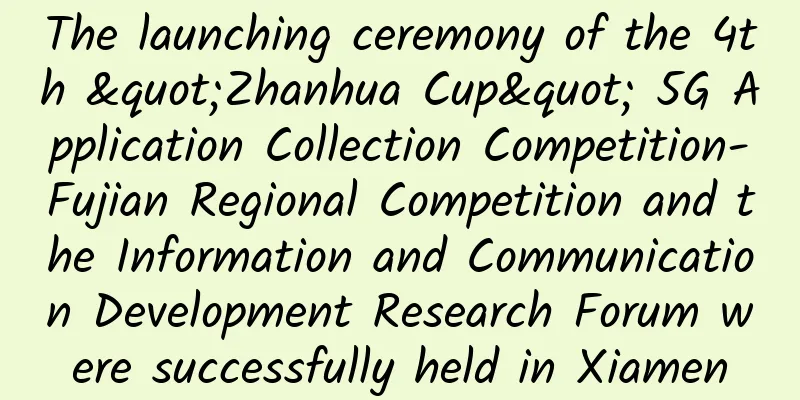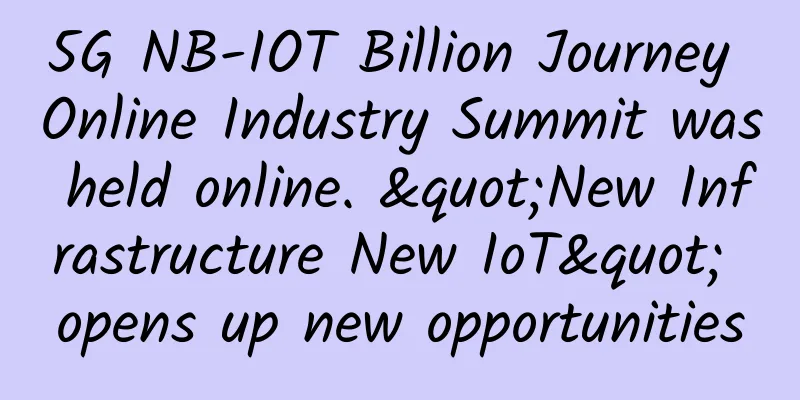Network Slicing "Hot Pot Theory": Same Pot, Different Dreams

|
In the dog days of summer, when people are "steaming buns inside and grilling on a teppanyaki grill outside", air conditioning and hot pot are simply a great pleasure in life. Speaking of hot pot, it is definitely the first choice for friends from all over the world with different eating habits to have a meal together. It doesn't matter if you have different tastes. There are many types of hot pots, such as tomato pot, mushroom soup pot, beef oil pot, spicy pot, double-flavored pot and even Thai Tom Yum Goong pot, for you to choose from. In fact, the development of network technology is like hot pot. If the development of 1G-2G-3G-4G is regarded as a straight line of evolution, then 5G is the expansion from "straight line" to "surface", from connecting people to the era of connecting everything, and the Internet of Things devices and data traffic are beginning to show explosive growth.
Network slicing's "Nine-grid" hot pot: I have all the "heat" you want Just as the tastes of friends from all over the world vary greatly, the emerging new businesses and application scenarios also have very different requirements for network functions, connection performance, security, etc. Emerging services such as drones or cloud games have very stringent requirements on latency, requiring the network to respond in a very short time to avoid the embarrassing situation where teammates go up to start a team fight while they themselves are stuck in a PPT. Services such as 4k/8K video require high bandwidth and do not have high requirements on latency. Crowded places such as events and concerts require large connections. If a new network is required for each business scenario, the cost will be huge. However, it is difficult to use the same network to carry different businesses and simultaneously meet the requirements of high bandwidth, low latency, and high reliability. This requires 5G to be flexible and convenient and able to meet different business needs.
Just like the nine-grid hot pot, the middle grid has strong fire and is not suitable for long cooking. It is suitable for some tender and crispy foods that cook in an instant, such as tripe and duck intestines. The side grids (cross grids) have slightly weaker fire, but the fire is evenly distributed, which is suitable for cooking. Long-term heating locks the original fragrance of the ingredients, such as mushrooms, meatballs, lotus roots, etc. The four-corner grid is a slow fire, and the mild fire is suitable for stewing dishes, making the food soft and tasty, such as brain flower, duck blood, quail eggs, and pig intestines. In order to provide differentiated protection services for different services, 3GPP has put forward the demand for network slicing. Just like the "nine-grid" and "Double-flavored pot", different slices share network physical resources (firepower, pot body), but can meet the different needs of different scenarios.
So what is network slicing? Is it really about slicing 5G networks like potatoes?
1. Slice definition We can compare the transportation system to the Internet. In the 1G/2G era, the services were simple and the demand was small, and network transmission was like vehicles on a country road.
In the 3G/4G era, data services emerged rapidly, the number of vehicles increased, and a single path could no longer meet daily needs, so two-way lanes appeared.
In the 5G era, traffic volume will grow exponentially, which will easily cause traffic jams. Therefore, the transportation department has divided BRT rapid bus lanes, non-motor vehicle dedicated lanes, etc. The more detailed the division, the higher the traffic efficiency. Network Slicing refers to dividing the operator's physical network into multiple logically independent virtual networks on the same network infrastructure. Each virtual network has different functional characteristics and can flexibly respond to different needs and services. These virtual networks are isolated from each other, and a failure in one of them will not affect other virtual networks. Network slicing has the following four characteristics:
2. Slice Type Slices can be divided into the following types according to different business scenarios and access objects. (1) Slicing based on business scenarios The current mainstream approach is to slice based on business scenarios, which is divided into eMBB slicing, mMTC slicing and uRLLC slicing, which are the three major application scenarios of 5G network slicing.
(2) Slicing of objects based on slice resources Slices can be divided into independent slices and shared slices according to whether the slice function resources can be shared by other slice resources.
5G network slicing technology is one of the key methods to achieve diversified network architecture. With the continuous development of technologies such as virtualization, the value and significance of network slicing are gradually emerging. Gartener's research report pointed out that the greatest revenue potential of 5G will be the development of network slicing. As a flexible configuration of 5G networks to adapt to different business needs, what changes will network slicing bring to the business model? The transformation of 5G network slicing business model In recent years, operators have been in trouble, with revenue from telecommunications services continuing to decline. China Mobile's revenue in the first quarter of this year was 185 billion yuan, down 0.3% from the same period last year, while profits fell 8.3%. "The traditional telecommunications business model was voice management in 2G, and traffic management in 3G and 4G. Traffic management in the 4G era has come to an end, and 5G requires a completely new money-making model and a completely new field." In the 5G era, operators need to create a diversified business model, and network slicing technology has always been regarded by experts as a tool that can improve the economic benefits of operators and become a "weapon" for realizing the commercial value of 5G.
In the slicing business model, the key business of telecom operators is to sell industry slices to various vertical industries. According to GSMA estimates, operators' revenue from network slicing will reach US$300 billion by 2025. Operators can provide network slicing in two forms in 5G networks. One is that operators use network slicing as an internal implementation of the network and do not present it to the outside world; the other is to provide it to third parties in the form of NSaas (Network Slicing as a Service). When used as an internal network, network slicing is not part of the communication service product provided to customers. Instead, operators deploy network slicing to provide communication services to customers for the purpose of internal network optimization. Providing it to third parties in the form of Nsaas services, industry customers can combine network slicing with their own applications through open interfaces, and can freely use and manage sliced networks to achieve more convenient services and better meet users' customized needs. 5G network slicing technology is an opportunity for operators to enter the vertical industry market, which will open up new businesses in many vertical fields and promote new business models and a new ecological environment. In addition, network slicing can achieve isolation during service deployment, reducing the integration of services and network functions, thereby accelerating the launch of new services and increasing operators' new business revenue. In 2020 and beyond, the development of 5G technology will become more and more mature. Diversification of network architecture is an important part of 5G network, and network slicing technology is a key method to achieve diversified network architecture. Driven by the continuous development of technologies such as 5G and network slicing, the Internet of Everything we pursue will eventually become a reality, and emerging businesses such as smart factories, telemedicine, autonomous driving, and drones will increase day by day, bringing great convenience to our lives and creating another new lifestyle. That’s all for today. Later, we will explain the implementation principles, common problems, and technical difficulties of end-to-end network slicing, and peel off the core of network slicing layer by layer. Stay tuned. Reference Links: 1.https://wenku.baidu.com/view/ee82121e3d1ec5da50e2524de518964bcf84d281.html 2.http://www.sohu.com/a/257683684_468736 3.https://mp.weixin.qq.com/s/rtnlMPVanBE_8sSyJ1SnIA |
>>: Why IoT needs machine learning to thrive
Recommend
The future of 5G technology: a world of infinite possibilities
The tech world is abuzz with something really exc...
Artificial intelligence combined with 5G will change the diagnosis and treatment model and process of the medical industry
The global COVID-19 pandemic has accelerated the ...
What role does a switch play in a network?
Switches play an important role in increasing the...
RAKsmart recharge big gift: popular VPS host $0.99/month, flash sale server $30.62/month
RAKsmart has launched a promotional event for the...
Want to migrate to the cloud at a low cost? Of course, you can’t miss the best money-saving strategy on 11.11!
[51CTO.com original article] The 2018 11.11 Shopp...
ProfitServer: 50% off VPS in Hong Kong/Singapore/Netherlands/Germany, unlimited traffic, starting at $2.88 per month
ProfitServer has launched a promotion to celebrat...
5G service routines for users have caused consumers to have more doubts about 5G
While the industry has painted many bright prospe...
Five network management trends for 2022
In recent years, the development trend of network...
Why is your router's ability to penetrate walls poor?
1. Is it my fault that the signal is weak? Whethe...
V5.NET Hong Kong physical server 40% off, 390 yuan/month-E5-2630L/16GB/480G SSD/10Mbps/2IP
V5 Server (V5.NET) has announced a long-term 40% ...
XDP technology for high-performance network framework
1. Basic Concepts of XDP XDP stands for eXpress D...
5G messaging: Where does it come from? Where is it going?
On December 3, 1992, Neil Papworth, a 22-year-old...
Teach you how to choose the most suitable wireless AP
With the popularization of the Internet and the w...
Quick questions and answers: 20 killer questions for computer network interviews
[[414422]] This article is reprinted from the WeC...
The 10 hottest technology keywords in 2018, every move will change the future
The end of 2017 is accompanied by the arrival of ...









